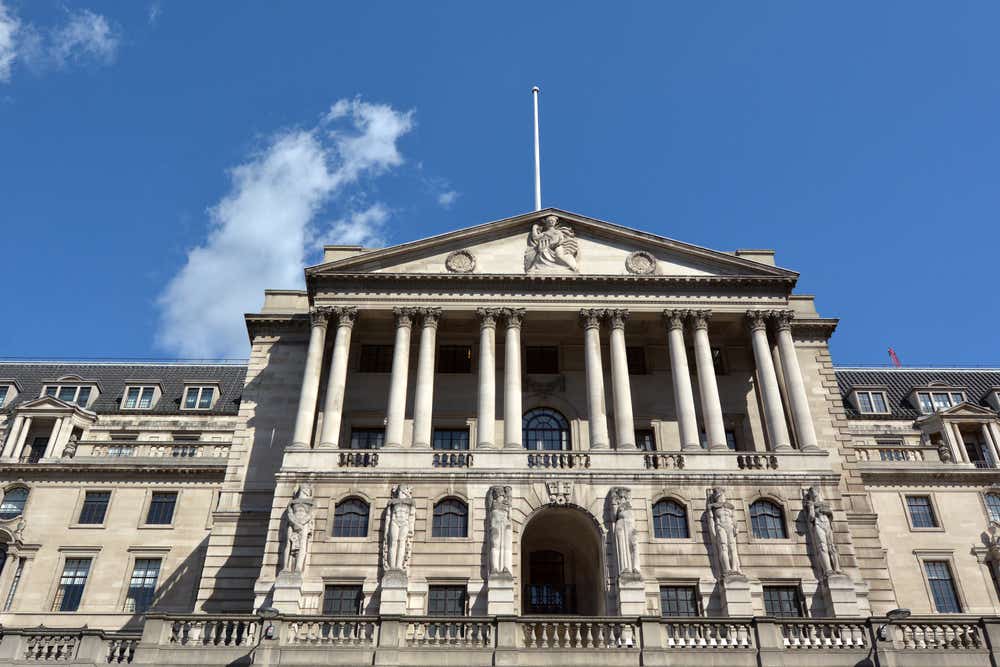What is a savings tracker account and how does it work?
As the base rate rose for the tenth consecutive time last month, we look at whether a savings tracker account is a smart move.

It’s fair to say that it’s been an interesting time for the savings market, as we’ve finally seen some positive growth with many savings accounts now offering interest rates four times higher than last year.
However, this increase has occurred alongside the Bank of England’s base rate, which had its tenth straight rise at the beginning of February. The base rate now stands at 4%, which is the highest rate we’ve seen since the financial crisis in 2008.
See the top-paying instant access, notice and fixed rate savings accounts on the market today
And this is where a savings tracker account can come into play. A savings tracker account has an interest rate that tracks the base rate whether it goes up or down. These accounts either follow the same base rate or have a fixed difference above or below. This means as the base rate has continued to rise, so has the interest rates on these accounts. However, if the Bank of England starts to cut the base rate then the interest will go down at the same rate.
Tracker rates available
One of the best tracker rates in the market is The Family Building Society 2 Year Tracker Bond (13) and its interest rate tracks the Bank of England’s bank rate but minus 0.25% on annual interest for the duration of the term. This account is available to new and existing customers and it can be applied for online, by post or in a branch. Currently, the interest rate is 3.75% and you won’t be able to access your money for two years.
Alternatively, Skipton Building Society’s Base Rate Tracker Account Issue 4 is an easy access account with a variable interest rate of 2.9%. This account will go up and down in line with any base rate changes from the Bank of England over the next 24 months. The interest is also guaranteed to track 1.1 percentage points below the base rate so that gives you an idea of how it aligns.
So, if the base rate rises and savings tracker accounts will follow suit, the big question is - will that growth continue?
Bank of England’s next meeting
The base rate will be discussed at the Bank of England meeting on March 23, but unfortunately it’s hard to say what the outcome will be. The base rate rises to reduce inflation and it’s impacted by our situation in the economy, so these factors will be a big part of the Bank of England’s decision.
This uncertainty makes it difficult to predict what will happen next, but economists have said we could see a peak of 4.5% in the summer.
However, by autumn many economists are predicting interest rates could start falling again - if not by much.
Instead of focusing on whether the base rate could rise, it’s best to compare savings tracker accounts against the other easy access and fixed-rate bonds in the market. That way, if rates do start to fall you can move your money to a better-paying account quickly.
If you do this, you’ll currently find these savings accounts are offering better interest rates than the trackers.
Comparing the market
Take Chip’s instant access savings account, which is offering a variable rate of 3.4%. This is higher than the 2.9% tracker offering from Skipton and it can be opened with just £1. A variable rate can fluctuate depending on a variety of factors, including the Bank of England’s base rate but it also takes into account market interest rates. Your bank would normally notify you if the variable interest rate changes. If you would prefer a fixed-rate bond similar to The Family Building Society’s tracker, Vanquis has a two-year fixed-rate bond with an interest rate of 4.35%, which is higher than the current base rate. This savings account allows you to invest from £1,000 and the interest is fixed for the entire term.
When you compare these savings accounts, it highlights how trackers are not offering the best interest rates, so following the base rate does not currently give you the biggest reward for your savings.
Maximise the value of your savings by hunting down the best rates available
About Lucinda O'Brien
As a trained journalist, Lucinda has spent the past 10 years writing and editing content for regional and national titles, including The Mirror, WalesOnline and Manchester Evening News. She is now a personal finance editor and specialises in savings, helping people to make confident financial decisions so they can save for what matters most.
